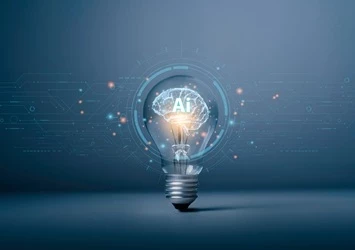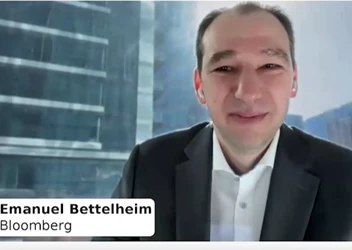LG Makes its Own Luck with AI
These days, it's artificial intelligence that makes life good at LG
Add bookmark
Originally known as Lucky-Goldstar, the LG Corporation has grown into one of the most popular consumer electronics companies in the world. However, behind the scenes, they’re also entering a new era of innovation defined by Artificial Intelligence (AI).
Become an AI Data Analytics NETWORK member today!
Premium content. Expert insight. Instant access. All for FREE.
A Look at LG’s AI Strategy
LG’s first foray into AI was AlphaGo, the first computer program to defeat a professional, world-champion human Go player. AlphaGo eventually evolved into AlphaZero in 2017, a single system that taught itself from scratch how to master the games of chess, shogi, and Go. But that was only the beginning.
LG took its AI strategy to the next level in December 2020 with the launch of its LG AI Research division in South Korea, a new innovation hub designed to develop new AI technologies. While LG initially planned to invest a reported $180 million over 3 years in this endeavor, by May 2021, they decided to invest an additional $89 million to “super-giant AI,” a large-scale computing infrastructure that resembles human brain structure. In other words, they’re looking to build a general-purpose artificial neural network.
According to LG’s website, “The “Super-giant AI” resembles the human brain structure that comprehensively and autonomously thinks, learns, judges, and acts, not limited to any specific use, by learning vast amounts of data based on computing infrastructure capable of large-capacity computation. To that end, LG AI Research plans to build large-scale computing infrastructure capable of processing 9,570 trillion times per second and launch ‘Super Giant AI’ with 600 billion parameters in the second half of this year. This is more than three times the 175 billion parameters possessed by GPT-3, the most powerful super-giant language model in existence.”
The ultimate goals of this initiative are to:
- Create an AI that achieves expert-level intelligence in various fields at the same time and, essentially, be smarter than the upper '1% of human experts'
- Successfully train the algorithm via practical communication with various people and numerous educational courses so that it is capable of communicating at a level on par with communication experts trained for decades
- Build this AI into customer consultation chatbots and callbots, allowing LG to analyze customer sentiment using NPL
- Develop an AI that is capable of even signing contracts with B2B customers
- Prepare for the “metaverse world” by developing AI that enables seamless communication and customer engagement
In the meantime….
When it comes to AI, LG is certainly not putting all of its eggs in one super-computer basket. In recent years, they’ve also achieved a number of smaller, but still remarkable AI development milestones.
For example, in December of 2021, LG unveiled Exaone, a multi-purpose AI model capable of curating, ingesting and interpreting massive datasets. According to the company, Exaone has learned more than 600 billion phrases and 250 million high-resolution images attached with text.
One of LG’s primary goals as they were developing this new AI was for it to be hyper-scalable. In fact, as of December 2021, it had already been adopted by LG Electronics, LG Uplus, LG CNS and LG Chem where it has been successfully applied to numerous use cases such as complex chemical research papers analysis, and using fluent chatbots.
Another example of LG’s AI prowess is Semantic Input Sampling for Explanation (SISE), an explainable AI algorithm. Developed in conjunction with the University of Toronto, SISE is essentially AI for understanding AI and can be used to understand how machine learning makes its decisions.
Become an AI Data Analytics NETWORK member today!
Premium content. Expert insight. Instant access. All for FREE.

































